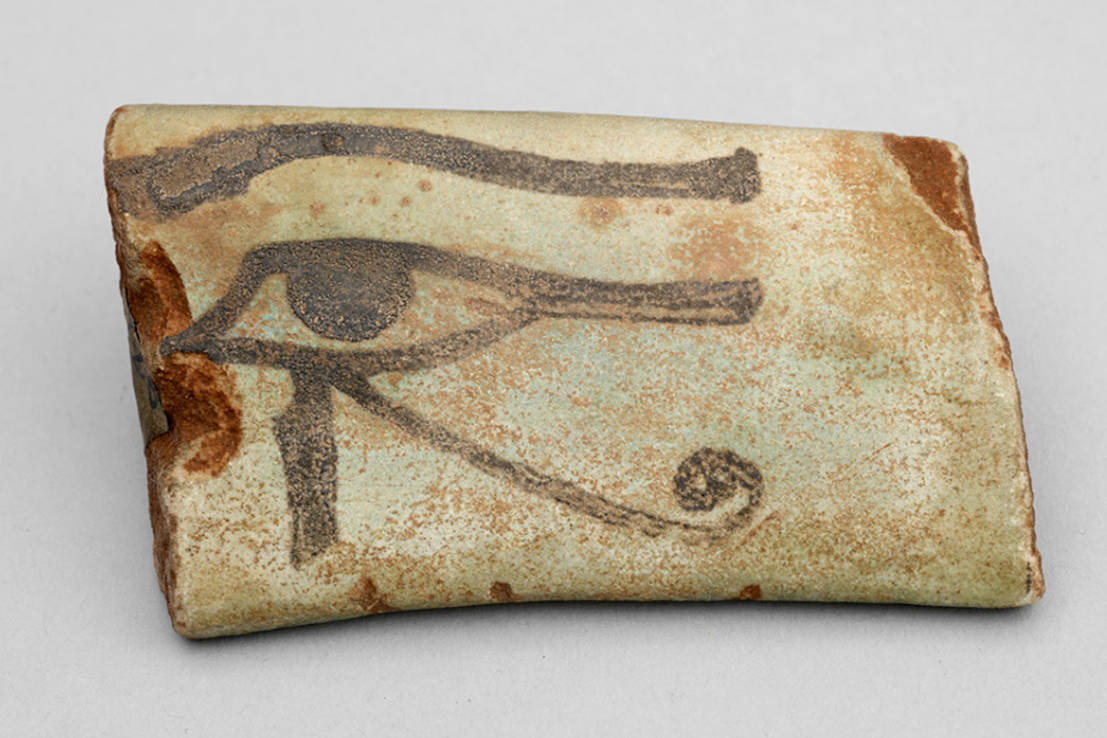
in Română / Romanian translated by Oana Lupașcu, Școala Românească, Manchester
This object has been translated into 13 different languages by 17 different users
Acesta este ochiul lui Horus, uneori cunoscut si ca ochiul wedjat, folosit ca simbol popular al protecției zeităților in Egiptul antic.
Horus era zeul egiptean al cerului, și era de obicei reprezentat ca un șoim. În mitologia egipteană antică, Horus și-a pierdut ochiul stâng într-o luptă cu rivalul său Set, care îl omorâse pe tatăl lui Horus, Osiris. Ochiul a fost apoi restaurat într-un mod magic de către Dumnezeul înțelepciunii, Hathor, iar aceasta restaurare a ajuns sa simbolizeze wedjat, adică vindecare, reîntregire.
Ochiul lui Horus a devenit apoi simbol de protecție popular, în mod particular pentru morți, și a fost folosit ca simbol de protecție mult dincolo de vremea civilizațiilor egiptene, timp de aproape 3000 de ani, de la vechiul regat până la era romana. Îl regăsim și în culturile vecine, cum ar fi in cultura Canaanita, Siriana sau în cultura Nubiana.
Tu păstrezi vreun obiect ca talisman pentru noroc sau protecție ?
Do you have something you’d like to say, in your own language or English, about the object or translation? We’d like to hear what you think.
Translations are community-sourced and for anyone to participate in, however you use your language. For more information, see Community Guidelines.
Notifications
23 Sep, 2023
Italians, especially in southern Italy, are well known for their attachment to superstition. Therefore, it is not surprising that good-luck charms are particularly popular. Arguably, the most popular amulet is the “cornicello” or “cornetto” (meaning “little horn”). The amulet is believed to protect against “malocchio” (“evil eye”), and it is commonly found in the Italian regions of Campania, Lazio, Puglia, and Basilicata.
The cornetto is in the shape of a horn, and it can be made from metal, but it is most commonly red in colour. This makes them look very similar to chilli pepper, but it is meant to represent an eland horn. The cornetto finds its origin in Greek and Roman mythology as it is linked to another common symbol: the cornucopia. The cornucopia, also known as the “horn of plenty” is a symbol of abundance and it is commonly illustrated as a large horn-shaped container overflowing with fruits and flowers. Similarly, the cornetto is also associated with abundance and fertility and remains one of the most common Italian symbols of protection. If you ever go to Naples, you can be certain to see at least one cornetto be worn as jewellery, hung from the rearview mirrors of a car, or kept in a house for decor and good luck.